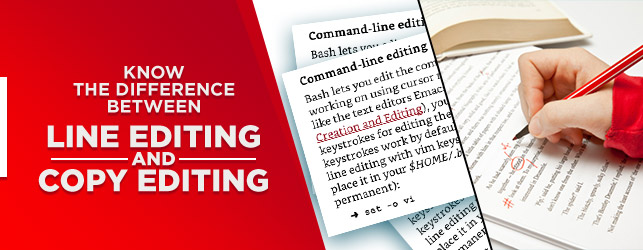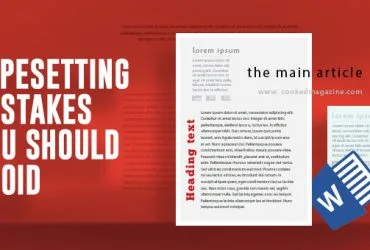Know the Difference Between Line Editing and Copyediting
Copy editing and line editing are two key techniques for refining a piece of text. Both of them involve serious attention to the use of language and marking up of the manuscript pages.
Although certain similarities are evident between copy editing and line editing, they are completely different from each other. Many authors actually fail to detect the difference between the two. These are completely different processes and experts with different sets of skills are entrusted with the tasks. Let us explore in detail the difference between copyediting and line editing.

What is line editing?
Line editing envelops editing done to the writing style, creativity of content and the use of language in paragraphs and sentences. However, It is not aimed to scan the document for errors; error correction services are not included. It focuses on the use of language while communicating the story to the reader. It checks whether the language is pleasurable, fluid, clear and easy to read. It also focuses on the essence created by the piece of writing, its tone, and emotion it evokes. This process also deals with ensuring the clarity of sentences and checking whether the language is stuffed with jargons or the meaning is precise.
The line editor looks out for the following flaws in the piece
- Overused words and sentences
- Redundancies arising from the repetition of the same information in multiple ways
- Run-on lines
- Paragraphs and dialogues that can be tightened
- Instances when author’s meaning is confused & the meaning lacks clarity
- Unnatural phrasing and shifts in the tone.
- Usage of bland language, leading to poor passage construction
- Narrative digressions that are confusing
- Changes that can pace up the passage
- Phrases or words that can make the interpretation clearer
When you work with a professional general editor for correcting these defects, quality of the manuscript undergoes an upliftment.
What is copyediting?
The process of copyediting aims to detect the loopholes in writing from a procedural perspective. Professional copyediting service ensures that the passage appears to the readers as per the standards of the concerned industry. It includes proofreading and other detailed editing aspects.
Copy editing service providers typically look out for the following defects in the passage
- Wrong grammar, syntax, punctuation, and spelling
- Inconsistencies in hyphenation, spelling, capitalization, numerals, and fonts
- Facts that deviate from actuality and are incorrect
- Various micro concerns, such as internal consistency
While ensuring internal consistency, the copy editor removes divergences from the setting, character traits and plot of the piece. The copy editor points out differences in the features of different characters in the passage and eliminates them.
However, the task of a copyeditor and a general editor who deals with line editing overlaps in certain cases. The former checks the logical inconsistencies and technical flaws in the passage when they appear, as their task is to produce a better write-up. The role of a copy editor is to comb through the piece, fixing the defects and these editors adhere to the Standard English followed by the respective country. They follow a particular ‘stylesheet’, where the specifications for particular elements in the passage are provided. The copyeditor incorporates the changes in accordance to the set of rules recommended in this sheet. It varies from one country to another.
Copyediting process starts when the general editor completes line editing. Starting off with high-end proofreading, the copy editor fine-tunes the task done by the line editor. However, the manuscript is finalized after the line editing process is completed and the copy editor works upon this to create an impressive piece of a write-up. It is done later, as sections of the passage may be altered later on. Therefore, there is no point in draining down the resources on proofreading and copy editing services at the beginning.
Before the manuscript is sent for production, the copyeditor is the last person who edits it. After he/she makes enough revisions to ensure quality, it is finalized for production.
Also, read more tips to become an awesome copy editor here.
In a nutshell, the role of a general editor is to help interpret the story in a better way. The copy editor is responsible for checking the grammar and technical aspects on every page. Both these editing processes are important for a publication house to ensure the quality and readability of the materials.



